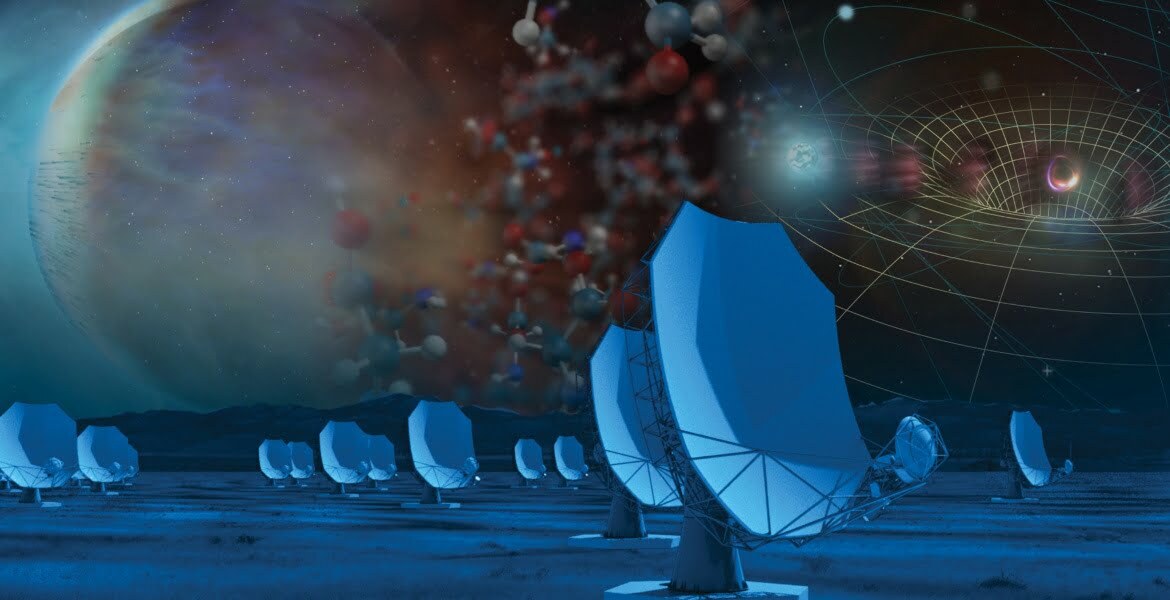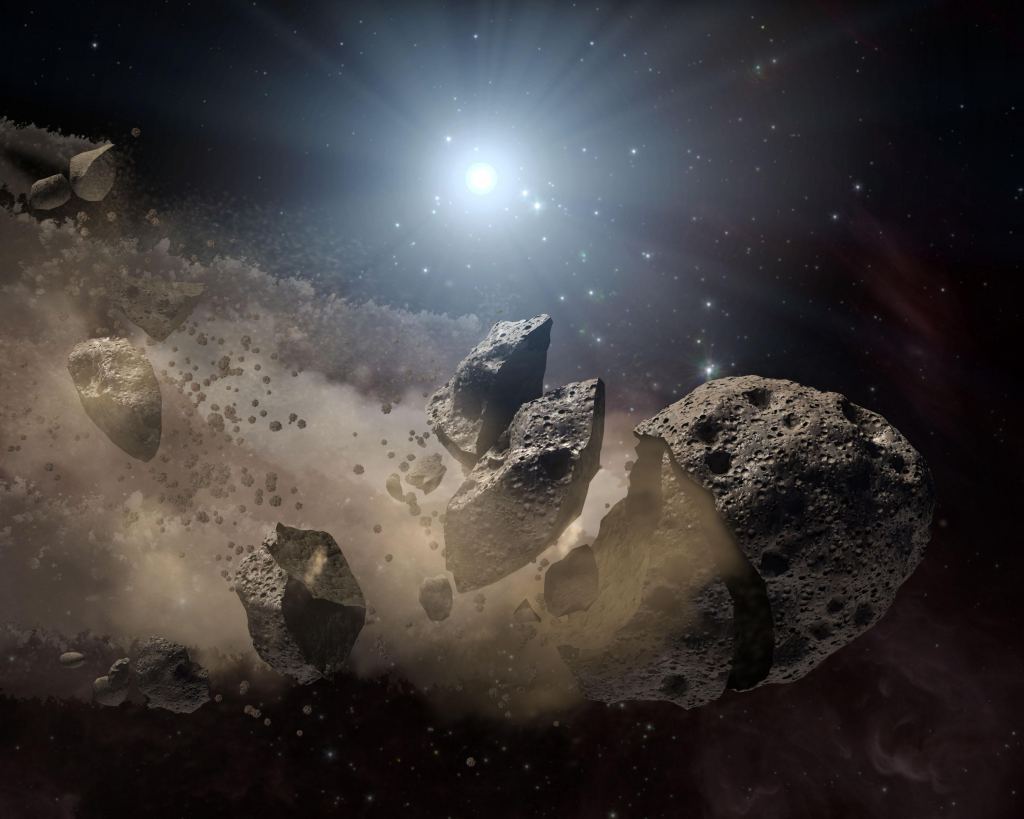The Next Generation Very Large Array Would be 263 Radio Telescopes Spread Across North America – Universe Today
[ad_1]
The iconic Very Large Array (VLA) in New Mexico has been at the forefront of astrophysical research since its dedication in 1980. The Y-shaped configuration of 27 radio astronomy dishes have made key discoveries about the cosmos, while becoming a part of pop-culture in several high-profile movies.
But the aging array is due for an upgrade, one that would take advantage of advanced technology. So says the latest Decadal Survey, published by the U.S. National Academy of Sciences, which presents a consensus among researchers on the most important scientific goals and missions for the upcoming decade.
What has been proposed is the Next Generation Very Large Array (ngVLA). As envisioned, it would be a system of 263 dish antennas spread across North America but concentrated in the U.S. Southwest. Scientists say the new array would provide dramatic new scientific capabilities to the world’s astronomers. The concept was listed as the second most important ground-based project, with the U.S. Extremely Large Telescope ranking first.
“Being ranked as an important new initiative indicates that our colleagues from all specialties within astronomy and astrophysics have recognized that they need the ngVLA to meet the leading research challenges of the coming decades,” said National Radio Astronomy Observatory (NRAO) Director Tony Beasley. “We designed the ngVLA based on extensive advice from the research community and know it will be in high demand by scientists from around the world

The ngVLA next will require approval by the National Science Foundation’s National Science Board in order to be considered for funding by Congress. Optimistically, proponents say construction could begin by 2026 with early scientific observations starting in 2029 and full scientific operations by 2035.
“This Astro2020 outcome is a direct result of the close collaboration between NRAO and the greater astronomical community in developing both the broad, transformative science case and technical design of the ngVLA over the last five-plus years,” said Eric Murphy, NRAO’s Project Scientist for ngVLA. “All of the community’s hard work has clearly paid off and we now look forward to continuing this collaboration as we finalize the design and move toward achieving first light with the ngVLA,” Murphy added.
The idea for the ngVLA has been in the works since 2015. The NRAO worked with numerous scientists and engineers to develop a design to support a wide area of scientific investigations over the lifetime of the facility. Participants from around the world contributed suggestions and expertise regarding the design.
The heart of the new ngVLA is expected to remain at the at the current site of the VLA on the Plains of San Agustin in New Mexico, with several radio antennas and a signal processing center. Other antennas would be located throughout New Mexico, west Texas, eastern Arizona, and northern Mexico. More antennas will be located in clusters in Hawaii, Washington, California, Iowa, West Virginia, New Hampshire, Puerto Rico (at the site of the Arecibo Observatory), the U.S. Virgin Islands, and Canada.

Operations will be conducted at the VLA site and in nearby Socorro, New Mexico, with additional science operations planned to be in a metropolitan area yet to be determined.
Scientists say the ngVLA would be designed to have sensitivity to detect faint objects and resolving power more than 10 times greater than the current VLA. Such capabilities could address fundamental questions in all major areas of astrophysics, and would complement the Atacama Large Millimeter/submillimeter Array (ALMA) and other planned instruments such as the lower-frequency Square Kilometer Array. It also will complement the capabilities of the US-ELT optical telescopes and the orbiting James Webb Space Telescope, which will operate at infrared wavelengths and is scheduled for launch in December 2021.
The Astro 2020 describes the new array as a facility that “would be absolutely unique worldwide in both sensitivity and frequency coverage,” and concludes that “It is of essential importance to astronomy that the VLA and Very Long Baseline Array be replaced by an observatory that can achieve roughly an order of magnitude improvement in sensitivity compared to these facilities, with the ability to image radio sources on scales of arcminutes to fractions of a milliarcsecond.”
Find out more about the ngVLA here.
Lead image caption:
Artists’s conception of the central portion of the Next Generation Very Large Array. Credit: Sophia Dagnello, NRAO/AUI/NSF
Source: NRAO press release
[ad_2]
Original Post





This is a very good tips especially to those new to blogosphere, brief and accurate information… Thanks for sharing this one. A must read article.
I have been browsing online more than three hours today, yet I never found any interesting article like yours. It’s pretty worth enough for me. In my opinion, if all website owners and bloggers made good content as you did, the net will be a lot more useful than ever before.
My programmer is trying to convince me to move to .net from PHP. I have always disliked the idea because of the costs. But he’s tryiong none the less. I’ve been using Movable-type on several websites for about a year and am worried about switching to another platform. I have heard great things about blogengine.net. Is there a way I can import all my wordpress posts into it? Any kind of help would be really appreciated!
There may be noticeably a bundle to learn about this. I assume you made certain good points in features also.
Hi there would you mind letting me know which hosting company you’re utilizing? I’ve loaded your blog in 3 different browsers and I must say this blog loads a lot quicker then most. Can you recommend a good hosting provider at a reasonable price? Kudos, I appreciate it!
Hi just wanted to give you a quick heads up and let you know a few of the pictures aren’t loading properly. I’m not sure why but I think its a linking issue. I’ve tried it in two different internet browsers and both show the same outcome.
Glad to be one of the visitors on this awe inspiring web site : D.
F*ckin’ tremendous things here. I am very glad to see your post. Thanks a lot and i am looking forward to contact you. Will you please drop me a e-mail?
I have been absent for a while, but now I remember why I used to love this site. Thanks, I?¦ll try and check back more frequently. How frequently you update your site?
Hey! Do you use Twitter? I’d like to follow you if that would be okay. I’m undoubtedly enjoying your blog and look forward to new posts.
Hi there! This post couldn’t be written any better! Reading through this post reminds me of my previous room mate! He always kept talking about this. I will forward this article to him. Pretty sure he will have a good read. Thank you for sharing!
An impressive share, I just given this onto a colleague who was doing a little analysis on this. And he in fact bought me breakfast because I found it for him.. smile. So let me reword that: Thnx for the treat! But yeah Thnkx for spending the time to discuss this, I feel strongly about it and love reading more on this topic. If possible, as you become expertise, would you mind updating your blog with more details? It is highly helpful for me. Big thumb up for this blog post!
I would like to thnkx for the efforts you have put in writing this site. I’m hoping the same high-grade website post from you in the upcoming as well. In fact your creative writing skills has encouraged me to get my own web site now. Really the blogging is spreading its wings quickly. Your write up is a great example of it.
I do accept as true with all the ideas you have introduced on your post. They’re very convincing and can certainly work. Nonetheless, the posts are very short for starters. Could you please prolong them a little from next time? Thanks for the post.
I wanted to thank you for this great read!! I definitely enjoying every little bit of it I have you bookmarked to check out new stuff you post…
Hi there! This post couldn’t be written any better! Reading through this post reminds me of my previous room mate! He always kept talking about this. I will forward this article to him. Pretty sure he will have a good read. Thank you for sharing!
I like this website so much, saved to my bookmarks.
Only wanna state that this is very helpful, Thanks for taking your time to write this.